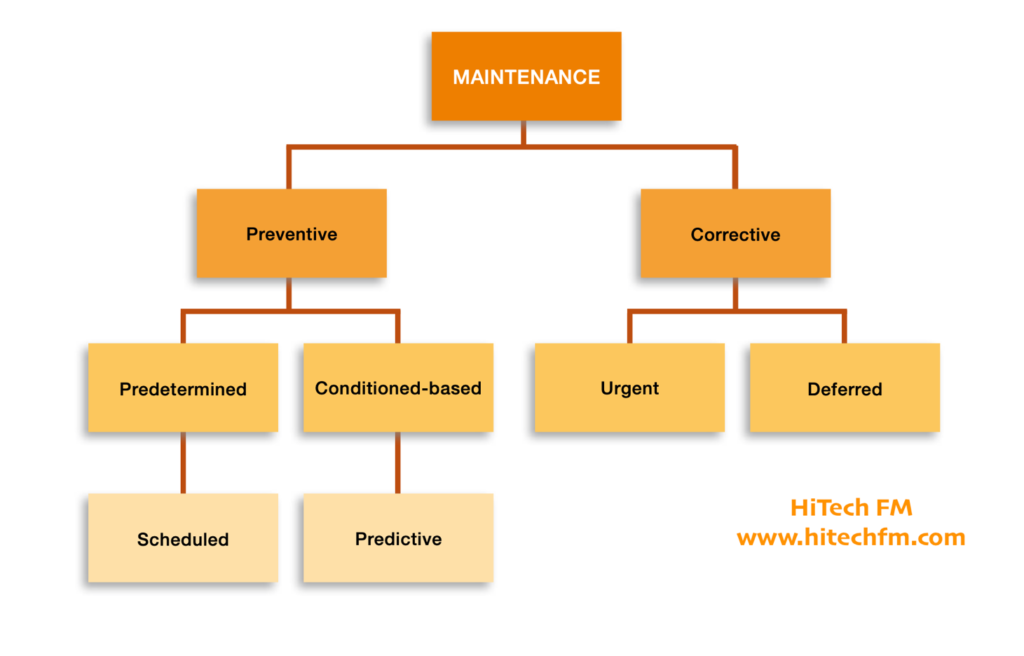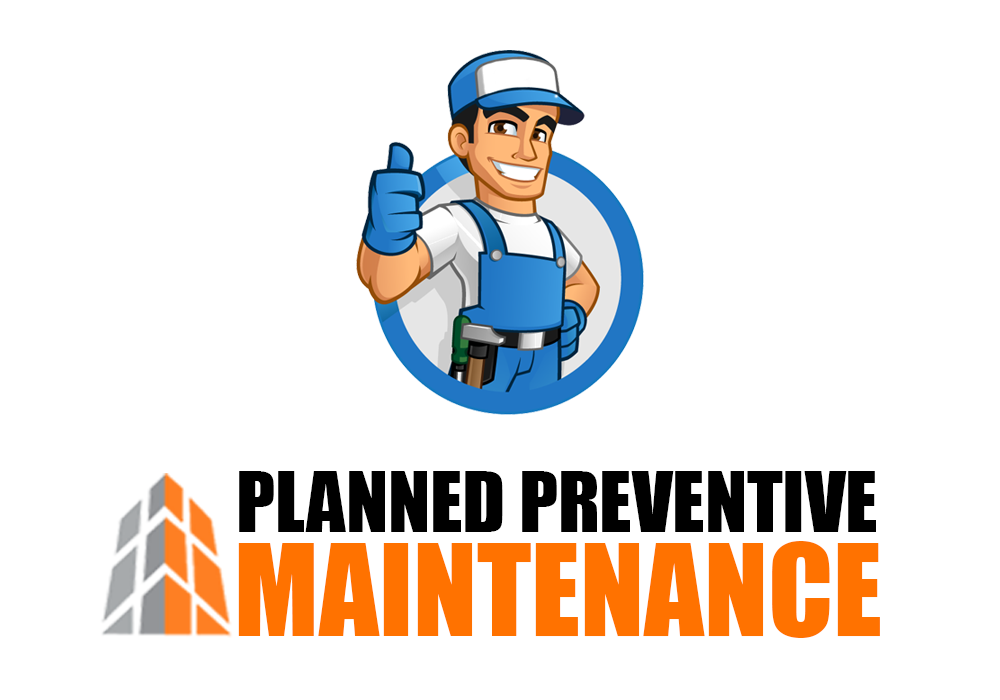WHAT IS PPM (Planned Preventive Maintenance)? WHY IT'S IMPORTANT TO PERFORM MAINTENANCE FOR CRITICAL BUILDING ASSET?
PPM means Planned Preventive Maintenance, also referred to as planned or scheduled maintenance. A reactive maintenance plan only allows repairs to be made after a failure. Reactive maintenance, on the one hand, encourages greater usage and performance in the short term.
PPM maintenance is designed to help optimize and preserve the value of your property or asset by allowing it to run successfully for as long as possible, in full working order and as safely as possible.
Proactive maintenance is the best way to keep a building in good shape and preserve its value.
 WHY IS PPM IMPORTANT FOR ANY ASSET?
PPM is important because it reduces the likelihood of costly air condition, electrical & plumbing, emergencies occurring. It’s a cost effective solution for your building, as the cost of regular routine maintenance is far less than the cost of replacing a asset. When an asset fails, this is usually an emergency situation that can cause significant disruption to the building and the people inside it.
WHAT IS ASSET PREVENTATIVE MAINTENANCE PLAN?
The Preventive Maintenance Plan is a document that lists all assets inside the property and their maintenance requirements. This plan details the maintenance schedule for each asset, including the costs and time involved. This provides an in depth assessment of all assets at your property.
Effective PPM strategy should de-risk any property investment for the landlord. The same applies to tenants who may take the obligation of the tenant to maintain the property in good condition. Being responsible for a property for a period of time could become costly if it is not costed for.
WHY IS PPM IMPORTANT FOR ANY ASSET?
PPM is important because it reduces the likelihood of costly air condition, electrical & plumbing, emergencies occurring. It’s a cost effective solution for your building, as the cost of regular routine maintenance is far less than the cost of replacing a asset. When an asset fails, this is usually an emergency situation that can cause significant disruption to the building and the people inside it.
WHAT IS ASSET PREVENTATIVE MAINTENANCE PLAN?
The Preventive Maintenance Plan is a document that lists all assets inside the property and their maintenance requirements. This plan details the maintenance schedule for each asset, including the costs and time involved. This provides an in depth assessment of all assets at your property.
Effective PPM strategy should de-risk any property investment for the landlord. The same applies to tenants who may take the obligation of the tenant to maintain the property in good condition. Being responsible for a property for a period of time could become costly if it is not costed for.
 WHY IS PPM IMPORTANT FOR ANY ASSET?
PPM is important because it reduces the likelihood of costly air condition, electrical & plumbing, emergencies occurring. It’s a cost effective solution for your building, as the cost of regular routine maintenance is far less than the cost of replacing a asset. When an asset fails, this is usually an emergency situation that can cause significant disruption to the building and the people inside it.
WHAT IS ASSET PREVENTATIVE MAINTENANCE PLAN?
The Preventive Maintenance Plan is a document that lists all assets inside the property and their maintenance requirements. This plan details the maintenance schedule for each asset, including the costs and time involved. This provides an in depth assessment of all assets at your property.
Effective PPM strategy should de-risk any property investment for the landlord. The same applies to tenants who may take the obligation of the tenant to maintain the property in good condition. Being responsible for a property for a period of time could become costly if it is not costed for.
WHY IS PPM IMPORTANT FOR ANY ASSET?
PPM is important because it reduces the likelihood of costly air condition, electrical & plumbing, emergencies occurring. It’s a cost effective solution for your building, as the cost of regular routine maintenance is far less than the cost of replacing a asset. When an asset fails, this is usually an emergency situation that can cause significant disruption to the building and the people inside it.
WHAT IS ASSET PREVENTATIVE MAINTENANCE PLAN?
The Preventive Maintenance Plan is a document that lists all assets inside the property and their maintenance requirements. This plan details the maintenance schedule for each asset, including the costs and time involved. This provides an in depth assessment of all assets at your property.
Effective PPM strategy should de-risk any property investment for the landlord. The same applies to tenants who may take the obligation of the tenant to maintain the property in good condition. Being responsible for a property for a period of time could become costly if it is not costed for.
- Longer lifetime of real estate properties
- Less need for unplanned big repair work
- Increased performance and lower unplanned downtime
- Improved net effectiveness
- Reduced maintenance costs and overtime costs
- Increased monitoring of protection and higher quality work
- Improvement of assets: planned works should respond more often to changing business needs
- Develop a knowledge of how the property is used
- Undertaking a complete review of the state of the building
- Generating a tailor-made plan to keep the building in good condition and to make changes if necessary.
- Collecting working reporting – report designed to be given to owner following completion if desired
- Implementation and appreciation of construction assurances and insurance provisions
- Providing a lease connection through an analysis of the lease repair strategy.
- Going to help you take care of ownership of property and assets
- Should provide the annual budgeting structure
-
- Test thermostat and change it.
- Check the condenser coil to decide whether it requires to be clean
-
- Check all wiring and control connections and electric links.
-
- Check the wearing of the blower belt, tension & adjust.
- Check voltage & amperage draw on all w/meter motors.
- Check the compressor contactor.
- Visually inspect the compressor and check the draw amp.
- Check the start capacitor and the possible relay.
- Test the Pressure Transfer Cut-Out settings.
- Replace an air filter or a clean reusable style filter.
- Mount the gauges & check the operating pressures.
- Check the refrigerant level and advise if any changes are required.
- Check the drain of the condensate and the pan, then advise of any inconsistencies.
- Check the expansion valve and the temperature of the coil.
- Parts lubricate as needed.
- Check evaporator coils and if dirty perform the cleaning task
-
- Inspect the pump unit for unusual noise and/or vibration, ensure that it is in good working order.
- Provide lubricating, if necessary.
- If unit is not running or an identified problem requires the unit to be serviced, perform all Non- Critical Tasks listed below.
-
-
-
- Flush and clean strainers.
- Check the operation of the gauges and record the pressures and temperatures.
- Inspect seals and packing, tighten or replace as appropriate.
- Lubricate the bearings of impeller shaft
- Inspect motor and pump alignment.
-
-
-
- Other recommended activities Inspect the pump mounting bolts and vibration insulators under load conditions.
- Start and stop the pump, noticing any movements and overall efficiency.
- Inspect drive shaft coupling.
-
- Inspect all drainage points if drainage is slower than usual that is a symptom of clogging. Use drain opener to clean the debris which clogging the drainage.
Check all noticeable pipes’ corrosion
-
- Visually inspect all the pipes for any corrosion if find suggest or replace the pipe to avoid any future leak
-
- Check for rusted heater’s pipes and replace the anode rod if required, also check pressure relief valve
-
- Inspect washrooms and kitchen sinks to check any possible leak and also check for leakage signs on walls or ceiling or in basement
-
- Inspect DEWA lines from main supply line to water storage tank. Keep water tank clean as per Dubai Municipality guidelines, Check sewer lines and perform regular sewer tank cleaning to avoid debris accumulation.
-
- Inspect washrooms and kitchen sinks faucet and change if necessary
-
- Check electrical rooms, electrical panels and remove dust, dirt or any debris. No storage, adequate lighting. Free of water or potential source of water. Check for burning odors. Panel doors should be in working condition. All the wiring is completely boxed and property secured.
- Check Switchgears, insulators, supports or connectors for any sign of cracking, broken pieces or for any damage. Check for insulation, any deterioration, cracking or overheating. Check if automatic and manual all switches are in working condition.
- Batteries stations clean from dust & dirt accumulation, check all battery terminals, make sure room has proper ventilation system. Check electrolyte levels and also check corrosion on battery terminals
- Electric Motors check for unusual noises, leaking seals or high vibration, check oil level gages, check air inlets are not blocked, clean debris or dirt build up, check for degradation of foundation and anchor bolts. Check heat and bearings using a stethoscope or infrared scanner
- Check interior & Exterior lighting A visual inspection of all the lights to make sure function properly and change if not working



